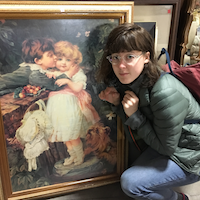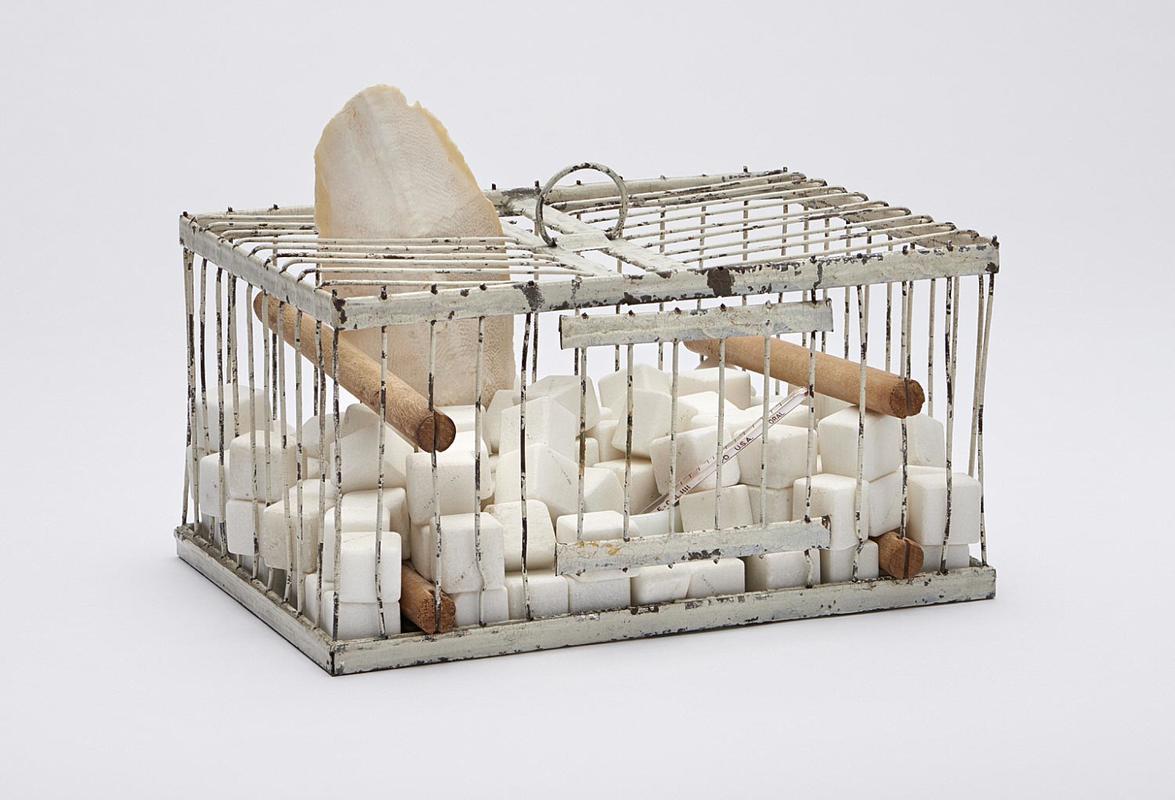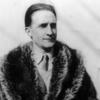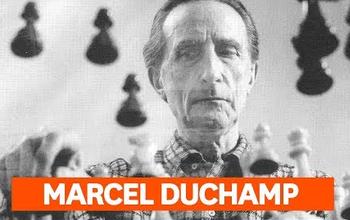More about Why Not Sneeze, Rose Sélavy?
- All
- Info
- Video
- Shop

Contributor
What do you get when you cross sugar cubes, a cuttlefish bone, a thermometer, and a birdcage? Well, you get Why Not Sneeze, Rose Sélevay? and a glimpse into Duchamp’s wacky mind.
Although it’s in line with the Duchamp-ian humor that we’ve come to expect from the art world’s biggest prankster, this sculpture doesn't quite fit in with his other work. Even someone unfamiliar with the Dada master could probably identify his Fountain with ease, yet time and time again, Why Not Sneeze, Rose Sélevay has been met with a resounding "huh?".
Marcel Duchamp is famous for pioneering a new way to make art that he called The Readymade. These whimsical sculptures were his way of trolling the genteel New York art scene; he took an everyday artwork, such as a urinal, and elevated it to the status of "fine art." The art world was not amused. Why Not Sneeze, Rose Sélavy? is, in essence, a Readymade but not quite. He called it an “Assisted Readymade” because it incorporated some found objects (birdcage, cuttlebone, thermometer) and some that were fabricated, such as one-hundred and fifty-two “sugar cubes” (inside of the cage in lieu of birds) laboriously fashioned from blocks of marble. It was against Duchamp's beliefs to call this work a Readymade since its creation wasn't entirely spontaneous. So, he created a new category. As Duchamp himself puts it, “It is a Readymade in which the sugar is changed to marble. It is sort of a mythological effect.”
Although it's not like you can just traipse into the museum and attempt to pick up the sculpture, merely looking at the piece won't allow you to fully understand it. At first glance, the sculpture seems to be very lightweight, however, the fact that the “sugar cubes” are actually made of marble means that it would be far too heavy to carry (to the dismay of art thieves everywhere). What makes this piece seem less handmade, however, are that the tiny cubes are each stamped with a very factory-like “Made in France.”
The title doesn't aid the viewer in interpreting Duchamp’s sculpture, either. Why Not Sneeze, Rose Sélavy? is a question that is as strangely worded as it is conceptually dissonant: sneezing is an inherently spontaneous act, so how could someone possibly control it? Duchamp confirmed this hypothesis when he said, "You don't sneeze at will; you usually sneeze in spite of your will. So the answer to the question "Why not sneeze?" is simply that you can't sneeze at will!" The question is obviously nonsensical, but one can’t help but attempt to answer it anyway. It's asked by (or perhaps asked to?) Rrose Sélavy, Duchamp’s concocted alter ego that he used frequently in his artwork. The artist scrawled the title and date on the bottom of the piece using black tape, placing each word on its own line:
WHY
NOT
SNEEZE
ROSE
SELAVY? 1921
Duchamp wrote the title line by line this way because he felt it resembled the jerky, uneasy moments preceding a sneeze that never comes. In his book on the artist, Jerrod E. Seigal suggests that since sneezes have often been compared to sexual climax, Duchamp is making a rather dirty joke here about the sensation of not "sneezing" but instead remaining in a permanent state of sexual desire.
Ultimately, this piece wasn’t well loved. It was commissioned by Dorothea Dreier, the sister of artist Katherine Dreier, for three-hundred dollars, and as per usual, the joke didn’t go over too well. Dorothea was displeased with it, and so she passed it along to her sister Katherine who eventually sold it to Walter Arensberg for no profit. But then again, no one thought Fountain was any good at first either.
Sources
- "Why Not Sneeze, Rrose Sélavy?." Tout Fait. http://www.toutfait.com/unmaking_the_museum/why%20not%20sneeze.html (accessed 17 July 2018).
- "Why Not Sneeze, Rrose Sélavy?." Tate Musuem. https://www.tate.org.uk/art/artworks/duchamp-why-not-sneeze-rose-selavy… (accessed 17 July 2018).
- Seigel, Jerrold E. The Private Worlds of Marcel Duchamp: Desire, Liberation, and the Self in Modern Culture. Berkeley and Los Angeles: University of California Press, 1995.
Featured Content
Here is what Wikipedia says about Why Not Sneeze, Rose Sélavy?

12.4 cm × 22.2 cm × 16.2 cm (4+7⁄8 in × 8+3⁄4 in × 6+3⁄8 in). Private collection.
Why Not Sneeze, Rose Sélavy? is a 1921 "readymade" sculpture by Marcel Duchamp. Specifically, Duchamp considered this to be an "assisted Readymade", this being because the original objects of which the work is made up had been altered by the artist. They consist of a birdcage, 152 white cubes (resembling sugar cubes, but made of marble), a medical thermometer, a piece of cuttlebone, and a tiny porcelain dish. The birdcage is made of painted metal and contains several wooden perches.
The Philadelphia Museum of Art displays the original as part of the Louise and Walter Arensberg Collection. Several replicas exist, made by Duchamp, but only in the original are the cubes stamped "Made in France".
Check out the full Wikipedia article about Why Not Sneeze, Rose Sélavy?














